The Many Parts of SoftRAID
SoftRAID is made up of three key parts: the application, the monitor, and the driver.
The SoftRAID application is used for setting up SoftRAID volumes and investigating problems. It doesn’t have to be running for you to use a SoftRAID volume and is usually only used a few times a month.
The SoftRAID Monitor is like the traffic sign at the side of the freeway that tells you about traffic conditions. Like the sign, it tells you when things are slowing down, or there is a problem you should deal with. It is always running in the background but isn’t required for your SoftRAID volumes to work. It just receives notices from the driver and puts up dialogs, and writes entries to the SoftRAID log whenever anything important happens.
The SoftRAID driver is really the critical piece that makes a SoftRAID volume so fast and reliable. It is running whenever you have a SoftRAID volume attached to your Mac. It gets called to perform every single read and write to a SoftRAID volume – often more than 10,000 times a second. We know that your important files rely on this piece of software, which is why we spend so much time testing and perfecting it.
SoftRAID Version 6 Beta Release Supports Big Sur
Why is SoftRAID version 6 still in beta? We have several additional features we want to add to the SoftRAID application. Rather than preventing users from upgrading to Big Sur, we decided to open the beta release of SoftRAID version 6 to everyone. We know this beta release is reliable as the driver has already passed through our test program and is a final release version.
We will continue to fix bugs in the application and refine the user interface before shipping the final release of SoftRAID version 6 in the coming months.
The Final Release of the SoftRAID Version 6 Driver Is Already Shipping
The final release of the SoftRAID version 6 driver has been tested extensively and is already shipping. We started testing this new version of the driver on Intel Macs when the first beta Big Sur was released. After four weeks of testing all supported RAID levels, we sent the driver to Apple for inclusion in the macOS Installer for Big Sur. Since mid-August, this driver has shipped with every beta release of Big Sur. The exact same driver now ships with the release version of the macOS Installer for Big Sur.
The SoftRAID version 6 driver which Apple ships is not limited in its performance and is able to rebuild RAID volumes normally. This is different from previous versions of SoftRAID driver, which Apple first shipped as part of the macOS Installer in 2005 with the introduction of Mac OS X 10.4. Previous versions of the SoftRAID driver, which were included in macOS Installers, all had limited functionality. For instance, the version 5 driver, which was included in the installers for macOS 10.11 – 10.15, did not perform rebuilds and had lower write speeds than the driver we shipped with purchased copies of SoftRAID. I am glad that the SoftRAID driver included in the macOS Installer for Big Sur does not have these limitations.
Does the SoftRAID Version 6 Driver Work With M1 Macs?
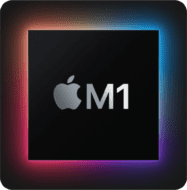
We have not yet released a version of SoftRAID that supports the M1 Macs. We purchased several prototype Macs with Apple silicon this past summer. While they were incredibly useful for converting our applications to native ARM code, they lacked Thunderbolt ports. The USB-C ports on the prototype Macs with Apple silicon were 1/4 the speed of Thunderbolt 3. This meant that any driver testing we did with these prototype Macs was not representative of the heavy loads the SoftRAID driver would sustain when used with Thunderbolt storage. This limitation of the prototype Macs prevented us from adequately testing the SoftRAID driver on Macs with Apple silicon.
I ordered one of the M1 Mac minis as soon as they were announced, and it just arrived last week. We have already started using it for reliability testing with a new version of the SoftRAID driver, which supports Macs with Apple silicon. Once it passes our normal driver test protocol, we will release a version of SoftRAID 6 that fully supports this new processor with all RAID levels.
Our Driver Testing Protocol
I know that users rely on our driver to keep their files safe and secure. This is why we extensively test the SoftRAID driver after every major modification to the source code. After these major changes, our standard test protocol includes running four Macs for five days on each of the RAID levels we support. We repeat this test both with HDDs and with NVMe SSDs to ensure that we don’t miss problems that show up either only with high latency storage (HDDs) or only with high bandwidth storage (NVMe SSDs). Our test tools duplicate the workload seen by a SoftRAID volume when many applications simultaneously access a volume. The tools write data patterns out to many files and then read them back and verify that the patterns are the same. We don’t accept the driver as having passed the test unless it can be completed on four Macs for five days for each RAID level. This is usually a total of 2 – 5 billion I/O operations per RAID level, the equivalent of 20 – 50 years of use by the average user.
Working with Apple for Every New macOS Release

I hate to say it, but I lose every summer because of Apple’s release cycle for macOS. As soon as the beta version of macOS gets released in June, I know I have many long days and weekends ahead tracking down bugs in SoftRAID and macOS and submitting bug reports to Apple. My family hates it as I am always reluctant to go on vacation until after the new version of macOS ships.
This summer was no exception. Of the more than 20 bugs I tracked down this summer, only two turned out to be in the SoftRAID source code. I was able to fix these quickly because of the great help I received from Apple engineers, many of whom understand the kernel’s inner workings so much better than I do. The remainder of the bugs were in the first beta Big Sur and were fixed before Apple shipped the macOS Installer to customers.
Due to all the hard work by Apple engineers, Big Sur looks to be the best macOS release I have seen in many years. I have actually been running it on the Mac I use for work and code development for the past two months. With all previous macOS releases, I had waited until January or February before I upgraded to the new version of macOS.
Let me know if you have any questions – I will try to answer as many as possible. Now it is time for me to go back and see how the tests of SoftRAID driver on the M1 Macs are doing…
Download SoftRAID Version 6 Beta
We will be doing public beta’s until 6.0 is ready for general release. The SoftRAID Monitor will notify you when a new beta is available.
>>> CLICK HERE TO DOWNLOAD <<<
Please read the release notes and make sure you “Allow” OWC as an Identified Developer in the Security Preferences of macOS when prompted!

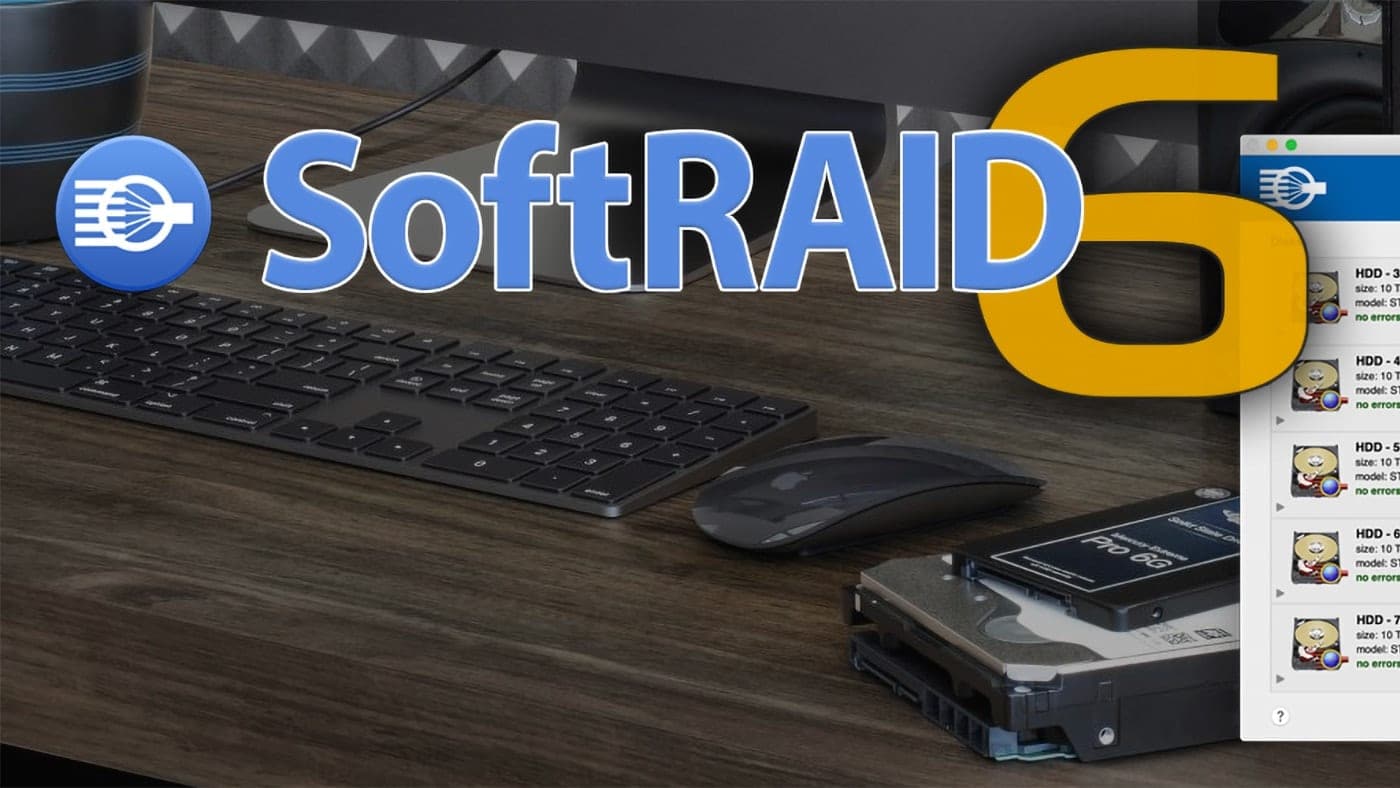

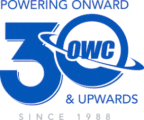
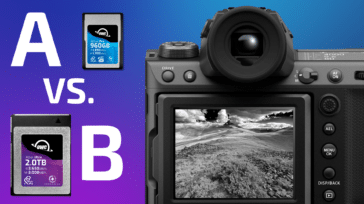

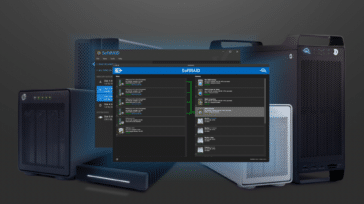
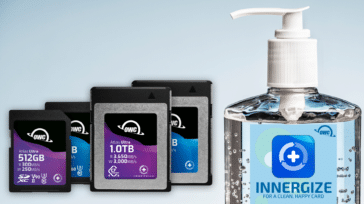


you guys are doing a great service to the mac community by keeping this as a viable product. I have highpoint RAID cards, and i doubt that they will ever produce an M1 driver. they have already dropped support for Raid 5 and 6, which is terrible for those of us who depended on hardware RAID. I’m going to get a full backup of all my highpoint raids and then turn them into non-raid systems and use SoftRAID for all future processes.
Are you going to do an update of this page with the regular release for M1?
We will be providing regular updates. And if you haven’t already, we would suggest that you signup for SoftRAID newsletter alerts HERE.
This is the only thing stopping me from buying the product:
so what happens if you are not on big sur and using a 2013 macpro to a thunderbay 8 or flex via an adapter?
You dont have the raid 6 driver preinstalled by Apple. So your best option when setting up softraid is raid 5?
When OWC release the raid 6/6+ version how do you change your raid configuration from raid 5 to 6?
Does all the data need to be removed, the raid set re striped and the data copied back to the raid set?
IF so that would mean owning a second identical unit just to upgrade the raid set.
Please inform me if I am wrong, I am not a softraid user and this would be my first owc product.
You are correct in that currently SoftRAID only supports RAID 5. We have plans to enable users to change RAID levels and to add disks to an existing volume, e.g. take an 8 disk RAID 5 volume, add 8 more disks, and turn it into a 16 disk RAID 6. This will not be in the first release which supports RAID 6 but should be in a release soon afterwards.
Ever since I first wrote the SoftRAID volume rebuild code back in 2002, my criteria for any rebuild code is that the user should be able to pull the power cable at any point during the rebuild process and not lose any files. This will be the same with the volume conversion code as I want to be able to be certain that all files are always safe during a volume conversion operation.
Hi Tim,
I really appreciate your response.
I have never really understood why thunderbolt raid sets are limited by number of drives?
Whats the point of being able to daisy chain so many drive caddies together if you cant easily construct a larger raid set on the fly.
I think there are a lot of people that don’t understand why the major players in this space all have the same range of bays (2,4,6,8,12) in their caddies, regardless of whether the units are thunderbolt or ethernet enabled. And then limit the expandability and size of the raid set.
I have more than a 80 archive drives in storage that need to come online. As I already own the drives, a product like a flex or a thunder bay appear perfect.
If I could only link many of them together as per the true intention of Thunderbolt to create a volume size of my choosing.
The more volumes you have the harder it gets to manage files and find files.
Is there any ETA on the release of 6 as I am looking to purchase now, but I have been made aware that I shift my data over to a 8 bay raid 5 I will have to move all the data of to construct the raid 6. That would mean I would need another raid of equal size to do this.
Will this be the same for when 6 allows expansion via t3?
I can only gather under these circumstances you would as I require 6 and a much lager number of disks, that I should either not buy the OWC product and use softraid or wait for the updated version of 6?
Thank you
First, the current limit in SoftRAID is 16 disks per volume. This was a design decision I made back in 2001. We are looking at raising this to 32. A lot will depend on whether Apple fixes the performance problems with APFS on HDDs.
I am sorry if I wasn’t clear in my earlier post. With the initial release of RAID 6 support in SoftRAID, you will indeed have to copy all the day off onto another storage device, create a RAID 6 volume with the disks and then copy it back. With a later release, I want to make it possible to do this conversion (RAID 5 with any number of disks converted to RAID 6 with an equal or greater number of disks) in place without having to copy the data of the disks first.
Lastly, my team is laser-focused on getting SoftRAID version 6 out the door. I want to make sure it is at our usually high quality standard and offers the new functionality which we want to introduce. It should be released soon.
Hi Tim,
Thanks again for clarifying. Im very new to softraid because I am looking at the OWC products as I am not keen on buying in Qnap or Synology.
Im glad you wrote this:
“With a later release, I want to make it possible to do this conversion (RAID 5 with any number of disks converted to RAID 6 with an equal or greater number of disks) in place without having to copy the data of the disks first.”
I hope thats possible. As I gather that means I would be able to buy into the OWC system setup in RAID 5 for now and then wait for the later release of 6 to do my upgrade.
32 would be great as a single volume set.
But like you, Im not banking on apple moving their feet quick on anything.
I dont think any of my drives except my system disk are in apfs…
Thanks for all your work on this. I picked up the new M1 MacBook Pro because my Mac Pro died and I needed something fast to keep my business running. I finally got my ThunderBay to mount after SoftRAID techs helped me out today. But one issue I have is that even after ejecting the ThunderBay, if I shut the power off it immediately crashes the MacBook – like turns it off immediately. I can’t imagine that’s good for anyone. Is anyone else experiencing that?
Hi Tim –
FYI. I am running macOS 11.1 on a 2019 Intel iMac and trying to load SoftRAID version 6.0.1 b43. At first I just launched the SoftRAID application and installed the driver. However, when I did this the driver did not load. Then when I ran the “Uninstall SoftRAID” command from the Utilities Menu item in the SoftRAID application, and then Restarted the iMac, and then launched the SoftRAID application to install the driver it worked! The driver would load and everything appears to be working OK. So, perhaps what is needed is to make sure that the user always runs the “Uninstall SoftRAID” command first before trying to install any new drivers…?
As with all new releases of macOS, there are several bugs regarding loading drivers in macOS 11.0.1, which still exist in macOS 11.1. For instance, I have an Intel Mac mini in the lab which will always load SoftRAID version 6.0.1 b42 regardless which version of the SoftRAID driver is installed in the driver installation location (/Library/Extensions).
We are are currently tackling this on 3 fronts:
1) Reporting the bug to Apple and working with them to fix it.
2) Adding code to SoftRAID to detect the problem and warn the user.
3) Creating a step-by-step fix which our customer support team can use to help with this.
I plan to have #2 and #3 completed in the next two weeks. Knowing Apple, #1 will probably take 3 – 4 months.
I am so glad you found a solution and thank you so much for sharing it with me.
Hi Tim –
Thanks for the update.
This worked for me too! I have a similar set up. 2019 iMac>Thunderbay IV
It was working fine until last night when the drive unmounted. Mysterious…
Everything seems okay again. Thanks to all who make things more awesome.
Happy New Year.
We are constantly working on bugs which affect 1 in 20,000 users a month. These are almost Apple kernel bugs. They are really hard to track down and even harder to get Apple to fix. Once we can reproduce them, we can usually get Apple to fix them in 3 – 4 months.
RAID Drives not mounting and even after enabling mounting in softraid software it doesn’t mount. Running Big Sur 11.1 in base model iMac Pro and SoftRAID 6.0.1 b47
Yes, we are aware of the problem with the driver not loading on macOS 11.1 on Intel Macs and are investigating it now. It is a consequence of the code we added to support the M1 Macs. For now, you can revert to version 6.0.1 b43. Here is the link in case you no longer have SoftRAID version 6.0.1 b43: https://softraid.com/updates/SoftRAID%206.0.1%20b43.dmg
Soft Raid Beta 6.0.1 b46 9in Big Sur 11.1 there is not shortcut icon in desktop.
I don’t remember SoftRaid ever creating a shortcut in the dock. It’s easy to do by dragging the application into the dock, which creates the shortcut.
Will the beta work with Catalina? I ran it and it no longer mounts my accelsior card. I went to menu and clicked on mount. Nope. I gave if full disk acess.
Please contact support@softraid.com and Mark will be able to help you find a solution to this problem.
Mark was very responsive and helpful, but couldn’t solve the problem. This beta will not let me mount(although it sees) my 8t accessior. I cant/won’t load BigSur till this is resolved. btw, the 5.8.4 works like a champ in catalina.
Yes, we are aware of the problem with the driver not loading on macOS 11.1 on Intel Macs and are investigating it now. It is a consequence of the code we added to support the M1 Macs. For now, you can revert to version 6.0.1 b43. Here is the link in case you no longer have SoftRAID version 6.0.1 b43: https://softraid.com/updates/SoftRAID%206.0.1%20b43.dmg
Thanks for your clear explanation and openness in describing the SoftRAID 6 update. I had held off upgrading to Big Sur because of adverse comments I had seen regarding SoftRAID. Now that I understand the situation, that decision can be made with more confidence in your product. Well done!
Thank you. We have spent almost 20 years figuring out new ways to protect the important files users have on their SoftRAID volumes. We are not going to stop now.
I am a little confused, here … I bought a Thunderbay6 recently, which included softRAID. Are you saying that once I’m running macOS big Sur, I no longer have to purchase OR install any version of SoftRAID, because the full version of SoftRAID is included in macOS distributions??
If you are running Big Sur with the copy of the SoftRAID driver which Apple ships with the Big Sur macOS Installer, you will get the same fast performance as you do with the retail version of SoftRAID.
But speed is only a small part of the storage solution provided by SoftRAID. If speed was all that people wanted, everyone would just use an AppleRAID stripe volume and be happy. Unfortunately, disks fail and cables are sometimes unreliable. (When a disk fails on an AppleRAID stripe volume, the volume becomes unreadable and all the files on it are lost.)
When you install the retail SoftRAID product, the SoftRAID driver gains the ability to write information about problems with your SoftRAID volumes to the SoftRAID log file. This log file helps you, and OWC Customer Support, figure out what has gone with your volume and how to fix it. It includes information like which disk in your RAID volume experienced the problem and the exact time the problem occurred.
The SoftRAID retail product also installs the SoftRAID Monitor. This background application displays warning dialogs whenever your volume experiences an error, like a disk failure in a RAID 5 volume. Without the SoftRAID Monitor, you would only know about a disk failure in your RAID 5 volume after the second disk failed. (When a single disk fails on a RAID 5 volume, you can continue reading and writing to files on the volume, when the second disk fails, the volume becomes unreadable and all files on the volume are lost.)
The SoftRAID Monitor also reads the SMART data from all your disks every 24 hours. The SoftRAID Monitor uses this information to identify disks which are much more likely to fail in the near future. This warning gives you a chance to replace a disk before it fails completely.
So you can go ahead and use your ThunderBay without re-installing SoftRAID after upgrading to Big Sur, but you will no longer have access to a lot of the features which make SoftRAID volumes so reliable.
Thank you for the explanation, Tim. So Apple now ships SoftRAID drivers, so SoftRAID volumes will work on any (fairly up-to-date) Mac. However, I understand that the retail SoftRAID product adds additional features (esp for reliability) that aren’t in the generic drivers that Apple ships.
This is correct. Apple installs our driver but not the other parts of SoftRAID which allow us to log events, display dialogs or check the SMART status of drives. Their policy is to only include drivers from third parties in the macOS Installer, no other code is permitted. This has been their policy since Apple started shipping the SoftRAID driver with the installer for macOS 10.4.
Does this enable us to install and run the monitor without disabling SIP?
As far as I know, it is only necessary to disable System Integrity Protection (SIP) if you are running macOS 10.13.6. This is due to a bug in one of the Security Updates Apple released for this version of macOS which prevents third party drivers from loading. When running any other version of macOS, the SoftRAID driver and SoftRAID Monitor should work fine with SIP enabled.
If you are running on macOS 10.15 or later, you will have to run with Secure Boot disabled. For more information about the difference between Secure Boot and System Integrity Protection, you can go to my blog article on the subject: https://eshop.macsales.com/blog/64201-secure-boot-and-sip-guard-your-mac/
Does the soft raid six version Also rebuild drives in Sierra, High Sierra, Mojave operating system’s
Yes, the beta version we released last week supports macOS 10.12, Sierra, through macOS 11, Big Sur. We have tested with with these versions of macOS and all the ones in between.
Tim, should we upgrade to the SoftRAID 6 Beta before we upgrade 10.15 to Big Sur? I have both TB4 T2 and TB4 T3 enclosures and wondered if testing the T3-T2 adapter with 10.15 and SoftRAID 6 Beta would be a validation that the driver works with the adapter (or was the post only applicable to M1 Mac?).
Thanks.
You can upgrade to SoftRAID 6 beta after upgrading to Big Sur. The macOS Installer installs the shipping SoftRAID 6 driver but lacks the disk health management features. You will also need the SoftRAID 6 application if you are running Big Sur.
The Apple Thunderbolt 3 to Thunderbolt 2 adapter works fine with Intel Macs and Big Sur.
I’m curious if SoftRAID 6 will include functionality for running RAID-6 itself. Any comment on that? Thanks.
Yes, SoftRAID version 6 will support RAID 6 and RAID 6+. Volumes which use RAID 6+ have dedicated parity disks, in exactly the same way RAID 4 uses dedicated parity disks. Like RAID 4, RAID 6+ affords a significant performance boost when reading from the RAID volume with fast storage devices like NVMe blades. In our testing this performance boost can be as much as 20%.
The support for RAID 6 and RAID 6+ is not yet in the released version of the SoftRAID driver. We will release it only after it has completed the level of testing detailed in the blog post.
We are currently deciding whether to increase the maximum number of disks per volume from 16 to 32. I would love to hear if you think this would be important for your application.
Thank you for all the hard work you put in to this. I just have Intel Mac to my Thunderbay and the drive is working great. I’m not seeing a link to the beta. I did find it, by searching though the SoftRaid forums and it is nice to have the software working right. Eventually I’ll replace that failing internal Mac mini drive.
Thank you so much for alerting me to this omission. I edit the blog post so it includes a link to the beta.
Great! Looking forward to it!
Can we verify Thunderbolt 2 to Thunderbolt 3 adaptors will work with the New M1/BigSur. We have the RAID 4 TB2 drive. I’d hate to have to do an unnecessary hardware upgrade.
I will have our tester figure out if the adapter is compatible and will report back here once I know.
Just upgraded today to an M1 Mac Mini from an old 2013 Mac Pro. I was using Thunder Bolt 2 OWC 4 port raid and bought a Thunder bolt two to Thunder bolt three adapter. The M1 Mac Mini doesn’t see the raid drive. Have you experienced these issues? Would the beta 6 big sur update get us connectivity?
This is covered in the section of the blog post entitled: Does the SoftRAID Version 6 Driver Work With M1 Macs? We have not yet released a driver which supports these Macs but will ship one as soon as are testing is complete.
What’s the situation whit this? Can we expect an M1 driver before the end of the year or is it a 2021 thing? Just so I know when I could be able to change to M1 Macs. I already have one on order.
Have I understood correctly that if my M1 Mac arrives before the SoftRAID driver is ready for M1 Macs, I could always convert my drives from SoftRAID to Apple RAID and live with them until SoftRAID driver for M1 Macs are ready? Of course, this puts my drives in higher risk because no SoftRAID monitoring is happening, but at least the drives could be seen by M1 Macs, and if I could live with not being able to verify any SoftRAID disks and not be able to certify any new drives.
When I am not responding to comments on my blog posts, I am working on testing and fixing the final bugs in the build of the SoftRAID driver which supports the M1 Mac.
All of the other parts of SoftRAID already work natively on ARM processors. You can check this by looking at the currently shipping beta version of SoftRAID 6.0 which is already listed as a Universal application. (Click once on the icon for the SoftRAID 6.0 b43 application and select Get Info from the File menu in the Finder.)
Last Friday, we shipped a beta release of SoftRAID which supports the M1 Macs natively. It supports all the RAID levels and functionality which SoftRAID has when running on Intel Macs.
We have found that some RAID volumes have slower write performance than those same volumes do on Intel Macs. We are investigating this further.
Is there an update on this? I installed Softraid 6 B52. Thunderbay 4 with thunderbolt 2 to thunderbolt 2 adapter. Drives are seen in disk utility and Softraid but do not mount. I right clicked the volume and tried to mount but it will not. Any idea if there’s a solution I am missing or if there’s a solution on the way? Thanks
Are you on an M1 Mac? Did you happen to upgrade to macOS 11.2? If so, this is a known macOS bug introduced in version 11.2. We alerted Apple to the problem more than a month ago and are waiting for the fix to be released in a beta of macOS 11.3.
For more information on this bug, please see the blog post I made which describes it in more detail: https://eshop.macsales.com/blog/70840-read-before-updating-m1-to-big-sur-11-2/
If you are on an Intel Mac, please contact our customer support team so they can help you get your ThunderBay working correctly.
Little confused. As of today, running Big Sur Intel 11.0.1, do I already have the SoftRAID ver 6 driver? When I installed the beta version did it include an updated version of the driver Apple included or a newer version? Are we only waiting for a final version of the SoftRAID ver 6 application with the last few UI bug fixes?
Thanks
I’m sorry if I didn’t make this as clear as I wanted. After installing Big Sur Intel 11.0.1, you have the release version of the SoftRAID version 6 driver.
If you subsequently run the beta version of the SoftRAID driver, it will offer to upgrade the driver as the version number of the beta is greater than the installed driver. At this point, the source code in this beta driver is identical to the final release version of the SoftRAID driver which Apple ships with the Big Sur macOS Installer application.
We will make changes to this driver only if we find bugs which need fixing and will then subject it to our standard 4 days on 5 Macs test cycle before we ship it as a new beta release. From this point on, all beta releases of the SoftRAID driver are release quality and have completed a complete round of driver testing.